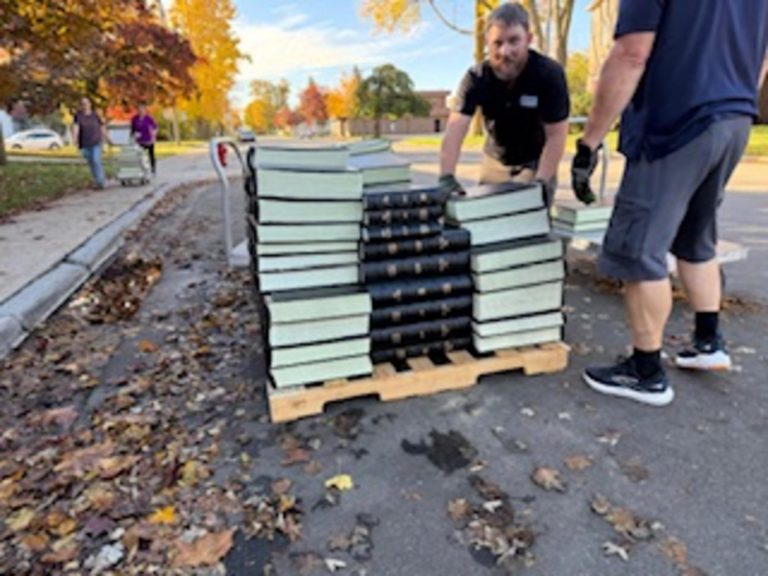Energy-saving tips
Michigan’s frigid winter weather is here and with colder temperatures comes an increase in energy consumption.
“Simply making a few small meaningful changes can make a big difference for your wallet, without sacrificing your comfort,” said Lauren Snyder, Consumers Energy’s vice president of customer experience.
If you’re like most people, you’re already doing some things to cut down on energy use, such as lowering the heat at night.
According to Consumers Energy, here are some more ways to make your home more energy efficient, without sacrificing a comfortable lifestyle.
Home Heating
Heating your home is the largest use of energy and offers the greatest opportunity for savings. About 30% of the total home energy budget goes for heating.
• Have your heating system tuned and inspected by a service professional before each heating season. Heat losses from a poorly maintained system add up over time, sometimes at a rate of 1-2% a year.
• Clean or replace the furnace filter often during the heating season. Furnaces use less energy if they “breathe” more easily. Follow instructions in the furnace manufacturer’s manual.
• Keep furniture, carpeting and curtains from blocking heat registers and air return ducts.
• If radiators are located near cold outside walls, place a sheet of aluminum foil between the radiator and the wall to reflect heat back into the room.
• Don’t overheat your home and overwork your furnace. Use supplemental heating equipment for hard-to-heat areas.
• When replacing your furnace, look for one that’s at least 95% efficient. If you need to replace your HVAC system, ask your contractor about ENERGY STAR certified units. And make sure that your new energy efficient unit is properly installed for maximum savings.
• While sleeping, add an extra blanket for warmth.
• Close your attic, basement, garage and exterior doors to prevent cold drafts and keep in heat.
• Ceiling fans set at slow speed push warm air away from the ceiling and move it around the room without creating a
chilling breeze. This spreads the heat more evenly and will make you feel more comfortable.
Your Thermostat
• Using a programmable thermostat will let you turn heat or air conditioning up when you are home and down when you go to work or to bed. You could save up to 10% on your total annual heating and cooling costs with little or no impact on your home’s comfort just by making this simple change.
• In the winter, set your thermostat at 68 degrees when you’re home and at 65 degrees when you’re away for a short time. If you’re used to higher settings, dial down 1 degree at a time until you feel comfortable.
• Wi-Fi enabled thermostats allow you to control your home’s heating and cooling remotely through your smartphone. Many smart thermostats learn your temperature preferences and establish a schedule that automatically adjusts to energy saving temperatures when you are asleep or away.
Water Heater
Water heating is a typical family’s third-largest energy expense, accounting for about 14% of utility bills.
• Take a shower instead of a bath. You’ll use less hot water.
• Install a low-flow aerator or flow restrictor on an existing shower head, and you’ll use 25-60% less water.
• Use an ENERGY STAR certified dishwasher instead of washing by hand. You’ll save more than 8,000 gallons of water a year.
• Set your water heater temperature at 120 degrees. A family of four, each showering for five minutes, uses about 700 gallons of water a week. By lowering the thermostat, you can cut water heating bills without sacrificing comfort.
• Turn off hot water when you don’t need it. Don’t let it run when you shave or wash your face.
• Fix defective plumbing or dripping faucets. A single dripping hot water faucet can waste 212 gallons of water a month.
That can increase your water bill and your energy bill.
• Keep your hot water hot by making sure pipes in unheated areas are insulated.
• Always use cold water when it will do the job as well as hot.
• Once a year, drain the water heater tank completely, then turn the incoming water on and off, alternating, for about 20 seconds. These actions flush minerals and sediment from inside the tank and make your water heater more efficient. Some newer models are self-cleaning. Check the manufacturer’s manual.
Dishwasher
• Set your dishwasher at 120 degrees or “low.” Check your manufacturer’s manual to see if you can use 120 degree water.
• Look for a dishwasher with a “boost” mode that can allow you to set your water heater lower yet still get dishes properly clean.
• Wash only full loads, and use the shortest cycle to get your dishes clean.
• Turn off the dishwasher after the wash and rinse cycles. When dishes air dry, you’ll save on heating costs. On newer models, use the heat-off setting or the energy-saver dry option.
• Avoid using your dishwasher to warm plates. The extra heat will raise your energy bill.
• A dishwasher will operate more efficiently if you unclog the drain of food particles and clean it weekly.
Stove and Oven
• Thaw foods and cut vegetables into small pieces. They’ll take less time to cook.
• Put lids on pots and pans. Foods will cook faster and use less energy.
• Considering a new cooktop? Choose an induction model and you’ll save energy and money.
• If the flames on your gas stove or oven are yellow, energy is being wasted and the burners need adjusting. Call an appliance repair professional.
When using your oven, follow these suggestions:
• Preheat the oven only when the recipe calls for it. Don’t preheat if you’re using the broiler.
• Use glass and ceramic dishes. They hold heat better and you can lower the oven temperature 25 degrees.
• Your stove or oven may not always be the best choice. Small appliances, such as crockpots, electric frying pans and your microwave oven may be more energy efficient.
• Open the oven door to peek at food inside, and you’ll lose 25 degrees to 75 degrees of heat. It’s best to look through the window or wait until the food is almost done before opening the door.
• If you have a self-cleaning oven, clean it immediately after use. Because it’s already hot, it will take less energy to get to the heat-cleaning stage. In the market for a new gas stove? Choose a model with electronic igniters instead of pilot lights for the highest efficiency.
• A microwave is best for defrosting and cooking small portions; an oven is more efficient for cooking large items, such as turkeys and roasts.
• When your electric burners are worn out and don’t work properly, they use more energy. Save by replacing them.
• Save energy by baking an extra dish or cooking entire meals in the oven at the same time.
Clothes Washer
• Wash and rinse your clothes in cold water instead of hot to save on water heating costs. Use a cold-water detergent.
• Set the water level on your washer to match the size of the load and save two ways — on water and energy.
• You’ll save more by waiting to wash until you have a full load.
• Add the right amount of detergent. Too many suds make your washer work harder and use more energy.
Clothes Dryer
• Fill your clothes dryer, but don’t overload it. Your clothes will dry faster when they have room to tumble.
• Overdrying wears out your clothes and wastes energy. Stop your dryer when the laundry is dry by setting the timer or using the auto dry cycle.
• Your dryer’s lint trap helps warm air flow better and dries your clothes faster. Make sure to clean it after each load.
• Need a new dryer? Heat pump models can reduce energy use more than 25% and are gentler on clothes.
• Dry your laundry in consecutive loads to take advantage of a heated dryer. Your laundry will dry faster and use less energy.
Refrigerator/Freezer
Your refrigerator/freezer uses more electricity than any other appliance in your kitchen.
• Avoid opening the refrigerator or freezer door to browse.
When you do, cold air escapes and your energy costs increase.
• Let hot foods cool before putting them in your refrigerator or freezer. Hot foods cause the motor to work longer and harder.
• Leave room in front of your refrigerator/freezer to allow cold air to circulate better.
• Because frozen food stays cold longer than air, keep your freezer full, but not packed. You’ll save energy by placing water-filled containers in empty spaces.
• Get rid of that spare refrigerator in the basement or garage – it’s less efficient and it’s costing you money.
• Condenser coils remove heat from inside the unit. Make sure they’re at least two inches from the wall and clean them twice a year.
• If cold air is escaping around the door seal, adjust or replace the seal. To check, close the door on a dollar bill. If it’s easy to pull out, cold air is escaping.
• If you have a manual-defrost freezer, it will work more efficiently when ice buildup is kept to 1/4 inch or less.
• Set the refrigerator thermometer at 38 degrees to 42 degrees and your freezer at 0 degrees to 5 degrees.
Other Appliances
Most homes have at least 50 household items that use natural gas or electricity.
• When upgrading small appliances, look for ENERGY STAR certification and you’ll use 10-25% less energy.
• To save water and energy, turn off faucets, indoors and out, when you’re done using them.
• Make sure the toilet handle doesn’t stick after flushing. It wastes water and makes your water pump run longer.
• Be sure the thermostats on appliances work properly. If the thermostat sticks, the appliance stays on and raises your energy bill.Turn off the humidifier or dehumidifier when they’re not needed.
• After making your coffee in the morning, turn off your coffeemaker and pour the leftover coffee into an insulated container to keep it hot.
• Turn off the TV, DVR, DVD player, stereo or radio when no one is watching or listening.
• If your water pipes are wrapped with insulating electric heat tape, turn it off when the weather warms up.
• Use small appliances that plug into electrical outlets instead of rechargeable devices, such as hand-held vacuum cleaners and lawn trimmers which use more energy.
• Unplug electronics when not in use. Computers, DVD players, televisions and other electronics, including power strips, use energy when they’re plugged in — even though they’re turned off.




